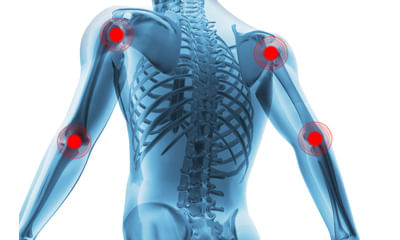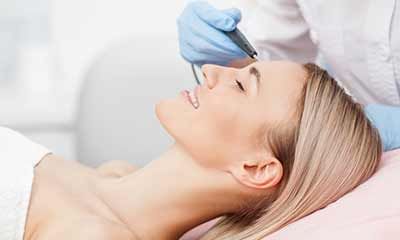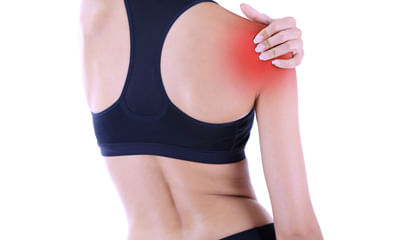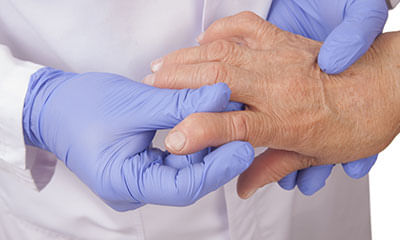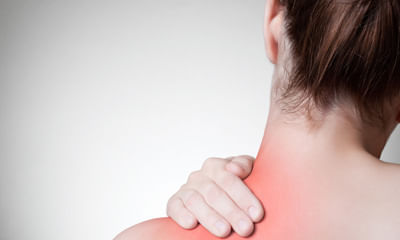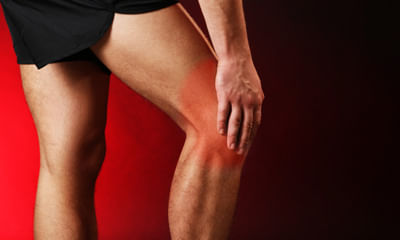What Is Trigger Thumb
What is the best homeopathic treatment for trigger finger? It is happening for more than 1 years. ...
Ask Free Question
Hi, lybrate user, You need to under go physiotherapy, first. Tk, homoeopathic medicine, underlying @ Ruta g 30ch -5 drops, thrice. Avoid, lifting weight with your affected palm. Tk, care.
Hi sir my mother thumb is test and tumb 1st joint near by plam joint pain and swelling them is not bend so please sugges ...
Ask Free Question
Conservative noninvasive treatments may include: rest. Avoid activities that require repetitive gripping, repeated grasping or the prolonged use of vibrating hand-held machinery until your symptoms improve. If you can't avoid these activities altogether, padded gloves may offer some protection. A splint. Your doctor may have you wear a splint at night to keep the affected finger in an extended position for up to six weeks. The splint helps rest the tendon. Stretching exercises. Your doctor may also suggest gentle exercises to help maintain mobility in your finger. Massaging the finger or thumb helps reduce the symptoms of trigger finger. Avoid applying too much pressure when massaging the affected digits, as this could cause more pain. Prevention trigger finger include: avoiding repetitive grasping or gripping motions avoiding the use of vibrating hand-held machinery avoiding any activity that worsens symptoms of trigger finger. Let us know if you need thumb spica splint I can assist you in getting it.
My mother 71, has developed dark edges at corners of her fingers, probably like blood clot. It has impact on her finger ...
Ask Free Question
I am sorry to hear about your concern but will be happy to assist you. Raynaud disease is a disorder that affects blood circulation, usually in the hands and feet. The arteries (blood vessels) that carry blood to your fingers, toes, ears, or nose tighten. This is often triggered by cold or emotional stress. The decrease in blood flow causes a lack of oxygen and changes in skin color. Let's connect over a call so that we can discuss your concern in details and make a suitable treatment plan for you.
I have a pain under my index finger on the inside of my hand. It's underneath my index finger and sort of between my thu ...
Ask Free Question
It can be due to sprain of unknown origin or due to cold exposure kindly detail more about it for proper management so that it gets resolved.
Dear doctor I had a lab test for anti ccp and rheumatoid factor and the result of anti ccp is 33.58 u/ml and the rheumat ...
Ask Free Question
The "normal" range (or negative test result) for rheumatoid factor is less than 14 iu/ml. Any result with values 14 iu/ml or above is considered abnormally high, elevated, or positive. Treatmentthere is no cure for rheumatoid arthritis. But clinical studies indicate that remission of symptoms is more likely when treatment begins early with medications known as disease-modifying antirheumatic drugs (dmards). Medicationsthe types of medications recommended by your doctor will depend on the severity of your symptoms and how long you've had rheumatoid arthritis. •nsaids. Nonsteroidal anti-inflammatory drugs (nsaids) can relieve pain and reduce inflammation. Over-the-counter nsaids include ibuprofen (advil, motrin ib) and naproxen sodium (aleve). Stronger nsaids are available by prescription. Side effects may include stomach irritation, heart problems and kidney damage. •steroids. Corticosteroid medications, such as prednisone, reduce inflammation and pain and slow joint damage. Side effects may include thinning of bones, weight gain and diabetes. Doctors often prescribe a corticosteroid to relieve acute symptoms, with the goal of gradually tapering off the medication. •disease-modifying antirheumatic drugs (dmards). These drugs can slow the progression of rheumatoid arthritis and save the joints and other tissues from permanent damage. Common dmards include methotrexate (trexall, otrexup, others), leflunomide (arava), hydroxychloroquine (plaquenil) and sulfasalazine (azulfidine). Side effects vary but may include liver damage, bone marrow suppression and severe lung infections. •biologic agents. Also known as biologic response modifiers, this newer class of dmards includes abatacept (orencia), adalimumab (humira), anakinra (kineret), baricitinib (olumiant), certolizumab (cimzia), etanercept (enbrel), golimumab (simponi), infliximab (remicade), rituximab (rituxan), sarilumab (kevzara), tocilizumab (actemra) and tofacitinib (xeljanz). These drugs can target parts of the immune system that trigger inflammation that causes joint and tissue damage. These types of drugs also increase the risk of infections. In people with rheumatoid arthritis, higher doses of tofacitinib can increase the risk of blood clots in the lungs. Biologic dmards are usually most effective when paired with a nonbiologic dmard, such as methotrexate. Therapyyour doctor may send you to a physical or occupational therapist who can teach you exercises to help keep your joints flexible. The therapist may also suggest new ways to do daily tasks, which will be easier on your joints. For example, you may want to pick up an object using your forearms. Assistive devices can make it easier to avoid stressing your painful joints. For instance, a kitchen knife equipped with a hand grip helps protect your finger and wrist joints. Certain tools, such as buttonhooks, can make it easier to get dressed. Catalogs and medical supply stores are good places to look for ideas. Surgeryif medications fail to prevent or slow joint damage, you and your doctor may consider surgery to repair damaged joints. Surgery may help restore your ability to use your joint. It can also reduce pain and improve function. Rheumatoid arthritis surgery may involve one or more of the following procedures: •synovectomy. Surgery to remove the inflamed lining of the joint (synovium) can be performed on knees, elbows, wrists, fingers and hips. •tendon repair. Inflammation and joint damage may cause tendons around your joint to loosen or rupture. Your surgeon may be able to repair the tendons around your joint. •joint fusion. Surgically fusing a joint may be recommended to stabilize or realign a joint and for pain relief when a joint replacement isn't an option. •total joint replacement. During joint replacement surgery, your surgeon removes the damaged parts of your joint and inserts a prosthesis made of metal and plastic. Surgery carries a risk of bleeding, infection and pain. Discuss the benefits and risks with your doctor.
My mother is suffering from shoulder, hand,and arm pains .6 months back she had a surgery for her thumb finger due to tr ...
Ask Free Question
Is she diabetic or having cervical spondylosis. If so is it under control. If you don’t know then get blood sugar fasting n x-ray of cervical spine (both ap n lateral) done from some lab. If you are experiencing shoulder pain, try these exercises to help relieve your pain url/shoulders/stretching-exercises-frozen-shoulder 1.Arm-across-chest stretch – hold your right hand out in front of you, keeping it near your waist. Reach your left hand behind your elbow, pulling your right arm to the left and across your chest. If you feel pain in your shoulder, lower your arm until the pain subsides. The goal is to be able to pull your right arm across your chest without feeling any pain. Hold for 30-60 seconds then relax and repeat with your left arm. Repeat 3-5 times. 2. Neck release – sit up straight then slowly bring your chin toward your chest until you feel the stretch in the back of your neck. Try leaning your head to the left to stretch your right shoulder or leaning your head to the right to stretch your left shoulder. Hold the stretches up to one minute in each direction, breathing deeply as you concentrate on relaxing. Repeat 3-5 times. To progress the stretch, elevate your arm as you pull it across your chest until it is the height of your shoulder. 3. Chest expansion – put an exercise band, rope, strap, or even a tie behind your back and grasp it with both hands. While holding the strap, draw your shoulder blades toward each other and gently lift your chin toward the ceiling. Breathe deeply for 10 to 15 seconds and release. Repeat 3-5 times. To progress the stretch, move your hands closer together on the strap. 4. Seated twist – sit straight up in a chair with your knees together. Twist your torso to the right, placing your left hand on the outside of your right thigh. Relax your shoulders as you look towards your right, gentling pushing on your right thigh. Breathe deeply for 10 to 15 seconds and release. Repeat with your left side. Repeat both sides 3-5 times. 5. The 90, 90 shoulder stretch – stand in a doorway, holding your arms up so your elbow is at a 90 degree angle and your arm forms a 90 degree angle to your body at the shoulder. Place each hand on one of the sides of the door frame, placing one foot forward as you stand up straight aligning your neck with your spine. Lean forward as you brace yourself against the door frame. Hold the stretch for 20-30 seconds. Repeat 2-3 times. For this homeopathic treatment is very effective for more details you can consult me.
My right hand's little finger gets turned downward with pain in the nyt. please tell me what is the problem with me. ...
Ask Free Question
trigger finger is condition that affect one or more hand tendon making it difficult to bend the affected finger or thumb if it is swollen and inflamed it can catch in tunnel doctor give special finger split if it stretch allow to heal you can take hypericum 30 three times a day follow up with me
When playing cricket the ball hit inside my left hand thumb and I felt pain and having swelling. In x ray its normal. No ...
Ask Free Question
Trigger finger is a condition that affects one or more of the hand's tendons, making it difficult to bend the affected finger or thumb. If the tendon becomes swollen and inflamed it can "catch" in the tunnel it runs through. It usually affects the thumb, ring finger or little finger. But we have to look into the details of the problem. Let's have a detailed discussion to Ensure proper treatment.
I am suffering from fungal infection on my foot fingers between thumb and next finger and I am continuously taking medic ...
Ask Free Question
The condition most often occurs when people wear tight-fitting clothing that traps in moisture. Wash the affected skin two to three times a day. Keep the affected area dry. Avoid excess affected skin irritation by wearing 100% cotton underwear. Avoid fabric softeners, bleaches, or harsh laundry detergents. Wash your workout clothes, underwear, socks, and towels after each use. Keep your affected area, inner thighs, and buttocks clean and dry, especially after you exercise and shower. After showering or bathing, dry the irritated affected area by gently patting it with a towel. Be sure to dry your skin thoroughly. Mix two tablespoons of apple cider vinegar in two cups of warm water. Wash the infected area with this solution and allow it to dry on its own. Another option is to apply a mixture of equal parts of white vinegar and coconut oil on the affected skin. Like hydrogen peroxide, rubbing alcohol can help kill off the fungus that's on the surface level of the skin. You can apply it directly to the affected area Listerine: It has antiseptic, antifungal and antibacterial properties, which help treat skin problem Here are some tips to help you manage the infection: Avoid using oily skin products. Reduce your exposure to the sun. Exposure to the sun may trigger or worsen an episode, and a tan makes the rash more visible. Do not wear tight clothing. Wear breathable fabrics, such as cotton, to decrease sweating.
Sir, I am 48 years old man and I am suffering from left shoulder and chest pain since almost 12 years. Initially I use t ...
Ask Free Question
It looks like you are anaemic. And also you have to check with your vitamin and calcium, if the bones are weak then automatically the pain gets triggered more as there is less energy during any metabolic activity.


